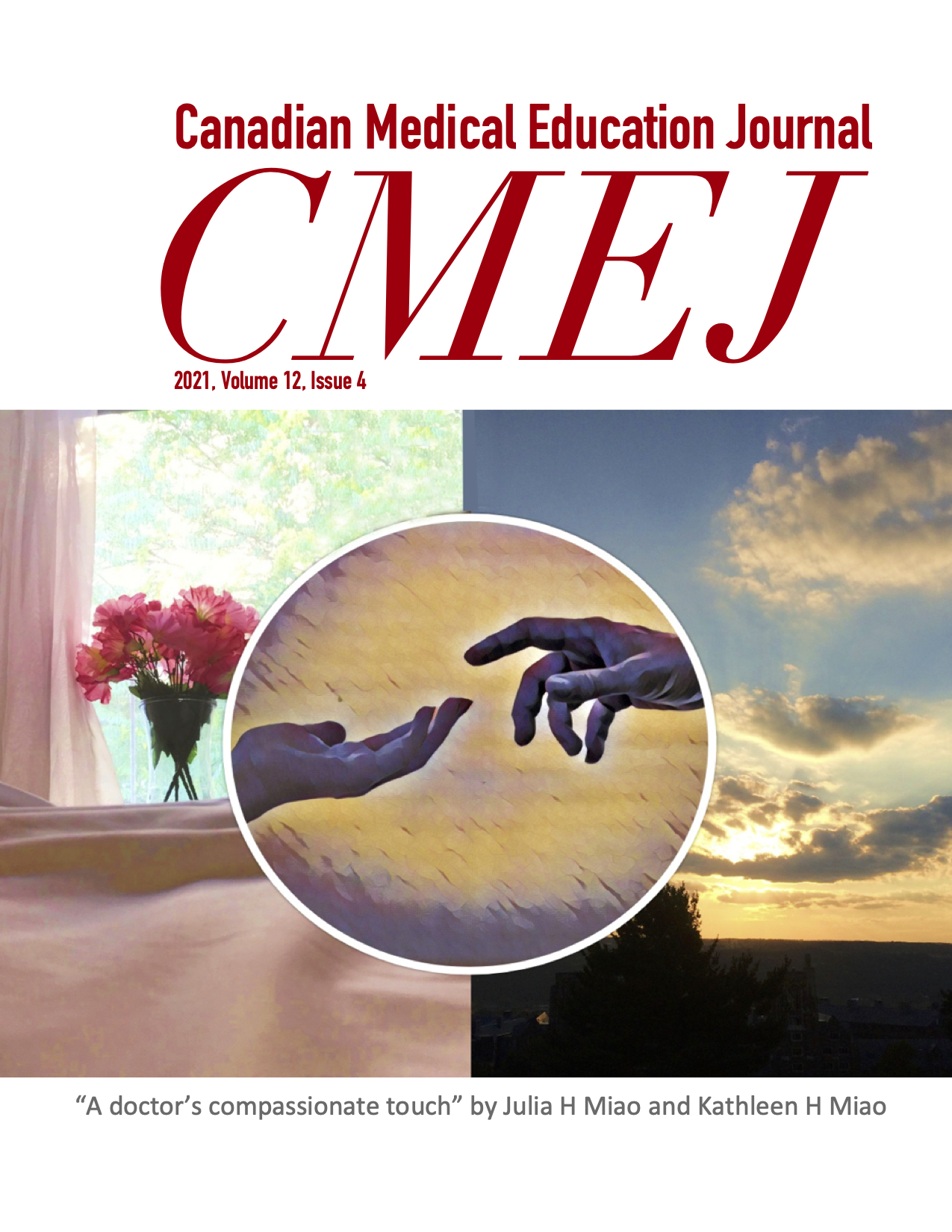Not wanted on the voyage: highlighting intrinsic CanMEDS gaps in Competence by Design curricula
DOI:
https://doi.org/10.36834/cmej.70950Abstract
Background: As governing bodies design new curricula that seek to further incorporate principles of competency-based medical education within time-based models of training, questions have been raised regarding the continued centrality of existing CanMEDS competencies. Although efforts have been made to align these new curricula with CanMEDS, we don’t yet know to what extent these competencies are meaningfully integrated.
Methods: A content analysis approach was used to systematically evaluate national Canadian curricula for 18 residency-training programs and determine the number of times each enabling CanMEDS competency was represented.
Results: Clear trends persisted across all programs. Medical Expert and Collaborator competencies were well integrated into curriculum (81% and 86% mapped to assessment) while competencies related to the Leader, Professional, and Health Advocate roles were less frequently mapped to assessment (41%, 36%, and 40%) and were often absent from the new curricula altogether (59%, 64%, and 60%).
Conclusion: Deliberate planning in curriculum development affords the early identification of gaps. These gaps can inform current assessment practice and future curricular development by providing direction for innovation. If we are to ensure that any new curricula meaningfully address all CanMEDS roles, we need to think carefully about how to best teach and assess underrepresented competencies.
Downloads
Downloads
Published
Versions
- 2021-09-15 (2)
- 2021-05-14 (1)
How to Cite
Issue
Section
License
Copyright (c) 2021 Joan Binnendyk, Rachael Pack, Emily Field, Chris Watling

This work is licensed under a Creative Commons Attribution-NonCommercial-NoDerivatives 4.0 International License.
Submission of an original manuscript to the Canadian Medical Education Journal will be taken to mean that it represents original work not previously published, that it is not being considered elsewhere for publication. If accepted for publication, it will be published online and it will not be published elsewhere in the same form, for commercial purposes, in any language, without the consent of the publisher.
Authors who publish in the Canadian Medical Education Journal agree to release their articles under the Creative Commons Attribution-Noncommercial-No Derivative Works 4.0 Canada Licence. This licence allows anyone to copy and distribute the article for non-commercial purposes provided that appropriate attribution is given. For details of the rights an author grants users of their work, please see the licence summary and the full licence.











